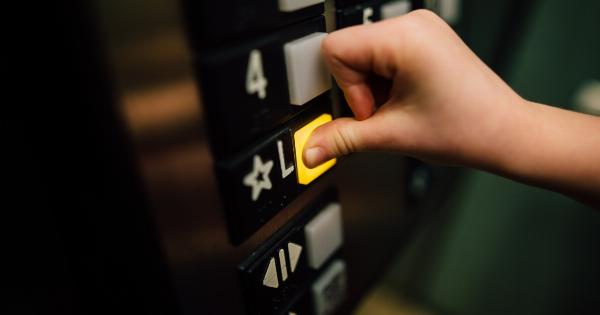Takotsubo Cardiomyopathy (TCM), also known as stress-induced cardiomyopathy or broken heart syndrome, is a reversible heart condition that occurs in response to emotional or physical stress.
It is characterized by transient left ventricular dysfunction, which is usually accompanied by electrocardiographic abnormalities that mimic those seen in myocardial infarction. The exact pathophysiological mechanisms of TCM are not yet fully understood, but it is believed to involve a complex interplay between autonomic nervous system dysfunction, catecholamine release, and myocardial stunning.
Dopamine and TCM
Dopamine is a neurotransmitter and hormone that plays a crucial role in the body’s response to stress. It is released in response to various stressors, such as physical exertion, emotional stress, trauma, and pain.
Dopamine acts on the sympathetic nervous system, which is responsible for the body’s “fight or flight” response. It increases heart rate, blood pressure, and cardiac output, among other effects.
Recent studies have suggested that dopamine may contribute to the development of TCM. One study showed that nearly half of TCM patients had elevated levels of plasma dopamine compared to healthy controls.
The study also found that dopamine levels correlated positively with the severity of left ventricular dysfunction in TCM patients. These findings suggest that dopamine may exacerbate the myocardial stunning and dysfunction seen in TCM by increasing the sympathetic nervous system’s activity.
The Role of Catecholamines in TCM
Catecholamines, including dopamine, epinephrine, and norepinephrine, are hormones that are released in response to stress. They act on the heart and blood vessels, increasing heart rate, blood pressure, and cardiac output.
Catecholamines also constrict the blood vessels, divert blood flow away from the skin and digestive organs, and increase blood flow to the brain and muscles.
Studies have shown that catecholamines may play a key role in the development of TCM. One theory suggests that excessive catecholamine release in response to stress may cause myocardial stunning and dysfunction, leading to TCM.
This theory is supported by the fact that TCM patients typically have higher levels of catecholamines than healthy controls. Animal studies have also shown that catecholamines can induce myocardial stunning and dysfunction, which can be reversed by beta-blockers, drugs that block the effects of catecholamines on the heart.
Other Mechanisms of TCM
Although the exact mechanisms of TCM are not yet fully understood, several other theories have been proposed to explain its pathophysiology. These include:.
Coronary Microvascular Dysfunction
Coronary microvascular dysfunction (CMD) is a condition in which the small blood vessels in the heart become damaged or dysfunctional, leading to myocardial ischemia.
CMD has been implicated in the development of TCM, as several studies have shown that TCM patients have impaired coronary microcirculation compared to healthy controls. It is thought that CMD may lead to myocardial ischemia, which, in turn, may cause myocardial stunning and dysfunction, leading to TCM.
Metabolic Abnormalities
Metabolic abnormalities, such as insulin resistance, diabetes mellitus, and hyperlipidemia, have also been implicated in the development of TCM.
These conditions are associated with endothelial dysfunction, inflammation, and oxidative stress, which may contribute to the pathogenesis of TCM. Insulin resistance, in particular, has been linked to impaired myocardial energy metabolism, which may exacerbate myocardial stunning in TCM.
Genetic Susceptibility
Several genetic factors have been associated with an increased risk of TCM.
These include mutations in the genes encoding the ryanodine receptor, which is involved in calcium regulation, and the G-protein beta-3 subunit, which is involved in adrenergic signaling. These mutations may alter cardiac function and increase susceptibility to TCM in response to stress.
Treatment of TCM
The treatment of TCM depends on the severity of the condition and the presence of underlying comorbidities. In most cases, TCM resolves spontaneously within days to weeks, with supportive care and medical management.
This may include the use of beta-blockers, which block the effects of catecholamines, and angiotensin-converting enzyme inhibitors (ACEIs), which may help reduce myocardial stunning and improve left ventricular function.
In rare cases, TCM can lead to severe complications, such as cardiogenic shock, acute heart failure, or ventricular arrhythmias.
In such cases, more aggressive interventions, such as mechanical circulatory support or percutaneous coronary intervention (PCI), may be necessary.
Conclusion
Takotsubo Cardiomyopathy is a reversible heart condition that occurs in response to emotional or physical stress.
It is thought to involve a complex interplay between autonomic nervous system dysfunction, catecholamine release, myocardial stunning, and other factors. Recent studies have suggested that dopamine may contribute to the development of TCM by increasing sympathetic activity, and that catecholamines may play a key role in myocardial stunning and dysfunction.
Further research is needed to elucidate the exact mechanisms of TCM and to develop more effective therapies for this condition.






























